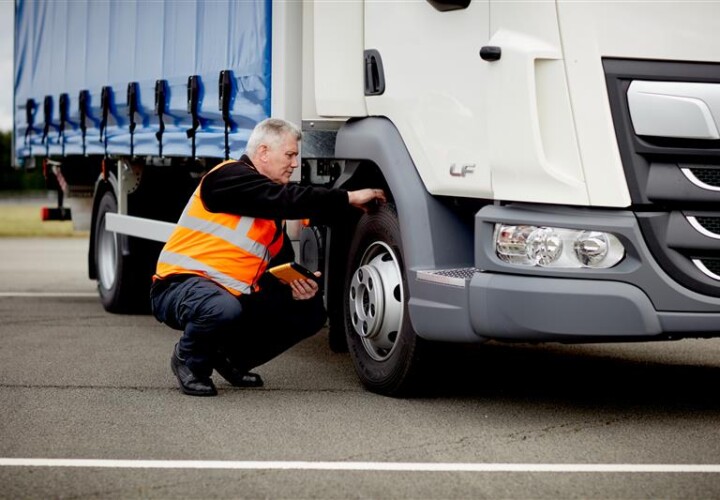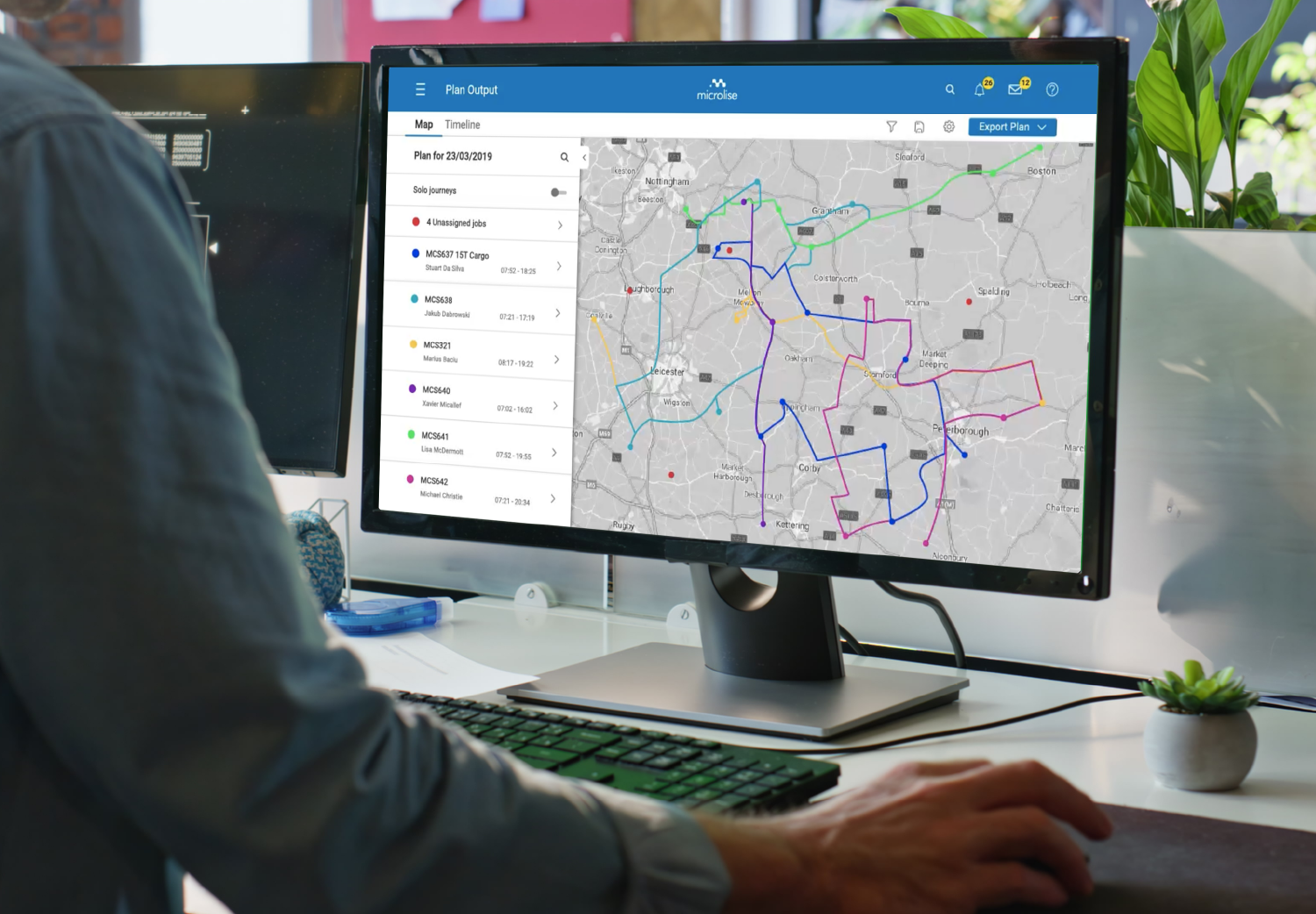How can preventative maintenance strengthen your fleet’s safety, compliance and security capabilities?
A poorly maintained vehicle is a money pit. They have reduced fuel efficiency, are more likely to break down and cost you more in repair bills.
They also pose more risks to the safety, compliance and security of your drivers, and other road users.
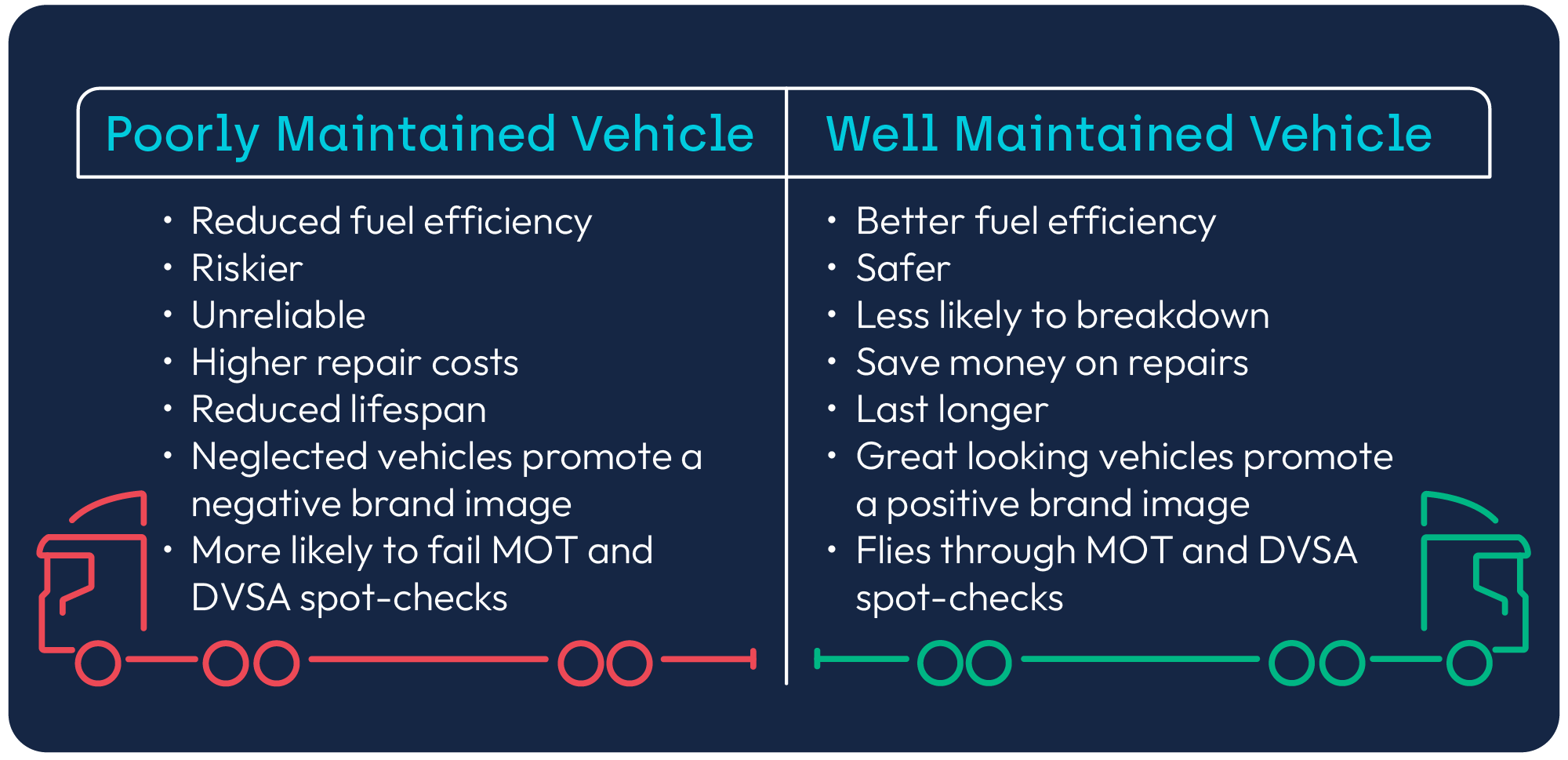
Keeping your fleet in tip-top condition will keep your vehicles running better, for longer.
So, avoid eye-watering recovery costs, reduce the likelihood of failing a MOT or roadside spot-check and power up the safety, compliance and security of your fleet with vehicle checks.
What’s your approach to preventative vehicle maintenance?
And are you seeing the benefits?
Did you know, 66% of accidents are caused by vehicle failures due to a lack of vehicle maintenance?
By law, fleet operators must ensure that work equipment, i.e. their vehicles, are maintained in an efficient state. Therefore, Vehicle checks are essential in maintaining a proactive, fleet maintenance strategy. During a check, potential issues are identified, and corrective action can be taken – potentially solving a problem before it escalates into a more costly concern.
As a result, healthy, well-maintained vehicles will:
- Run more efficiently
- Breakdown less
- Last longer
- Be safer for drivers and road users
- Save you money
What type of vehicle checks can boost the performance of your fleet?
From essential to ‘next level’, how often you service and check your vehicles speaks volumes about your approach to fleet management. A world class operation will seek out proactive opportunities that promote long term gains in terms of fleet safety, compliance and security.
Vehicle checks, when used in conjunction with your fleet management system will unlock a wealth of vehicle maintenance data.
In terms of preventative maintenance, not only do they capture and keep a close eye on the health of your vehicles, but they boost the safety performance of your vehicles and significantly reduce the likelihood of a breakdown or accident.
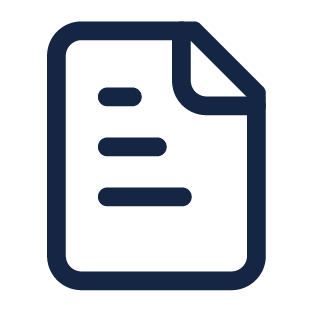
Daily pre and post checks – catch issues early
A pre-check inspection is a physical check of a vehicle before it heads out on the road. These can be performed by fleet managers or, most likely, by drivers at the start of their shift. A post-check inspection will check the vehicle when it returns to the depot.
Checks can be tailored to your organisation, but here are a few examples of items you would expect to see:
- Tachograph functionality
- Seat belts
- Lights and indicators
- Door security
- Mirrors
- Windscreen/wipers
- Tyres
By flagging and logging observations daily, fleet operators can continually monitor and manage corrective action in terms of booking future repairs or servicing – and spotting those more discreet problems hiding under the bonnet.
Where issues are considerable, vehicles can be marked as VOR (Vehicle Off Road) and be made unavailable for use.
Did you know, using a vehicle check application on a phone or mobile device can digitally capture all information required by the DVSA and give you an audit-proof, time-stamped report?
Never miss a trick: keep on top of the condition of your vehicles and act fast to avoid complications further down the line.

Regular maintenance checks – get ahead of the game with service schedules
For heavy goods vehicles (HGVs) the recommended time between servicing varies depending on age, mileage and use of the vehicle. But most commonly, servicing takes place every 6-12 weeks.
An enhancement of daily, pre and post checks, regular HGV service inspections dive deeper into the preventive maintenance of vehicles checking steering, suspension, brakes, tyres, emissions, wiring, lights etc.
Aligned with MOT requirements, regular services will ensure that vehicles are compliant with DVSA standards. They can spot any defects that can be quickly fixed and enable vehicles to fly through MOTs.
A world class standard: proactive fleet management will mean your vehicles are maintained to the highest level.

Annual maintenance checks – stay compliant with MOTs
Like all road vehicles, HGVs require a valid MOT certificate. An MOT inspection checks that your vehicle meets the minimum safety standards as required by the DVSA and must be renewed annually.
If a vehicle fails, additional costs occur, including fixes and paying for a re-test which means vehicles are out of use, for longer.
Did you know, the top MOT failure items for HGVs are brakes and lamps?
Pass or fail: there’s no doubt when your vehicles are always MOT-ready.

Trailer maintenance – keep your trailers rolling
A rolling road brake test measures the braking performance of a trailer. As part of the test, trailers are placed onto rollers, and when the brakes are applied, the system measures the braking performance of each wheel.
A quarterly compliance requirement, trailer brake tests involve taking your trailer out of service and heading to a specialist centre or using specialist equipment.
Did you know you can avoid rolling road brake tests with the help of the brake health monitoring software, TBPM?
Ensure the safety of your drivers, vehicles – and your trailers.

Security protocol maintenance – firm up vehicle security
Are you responsible for transporting high value goods or is freight crime becoming a growing concern? Raise the priority of security checks within your fleet.
Why not ask the questions that will help keep your cargo and drivers safe:
- Is vehicle/trailer tracking enabled?
- Are all locks secure?
- Are trailer door sensors working?
- Is your panic button functioning?
- Have you tested your emergency comms?
Did you know, road transportation accounts for 71% of all cargo theft incidents?
Fix up, look sharp – and secure!
What smart technology can help you raise the bar?
As always, we believe in the power of technology! By leveraging the latest and greatest in technology advancements, fleet operators can add strength and quality to your fleet where you need it.
From boosting the safety of your drivers to protecting high value cargo, take a look at your current operations and ask yourself, what’s the next step, and what tech can help you get there?

SmartPOD Vehicle Checks – digitise your vehicle checks and provide a full audit trail
Give your drivers a handheld, user-friendly way to carry out vehicle checks on the go. SmartPod checks are fully customisable and integrate seamlessly with your fleet management system.
Should the DVSA or your insurer ask, you can quickly provide time-stamped records of all your daily vehicle checks.
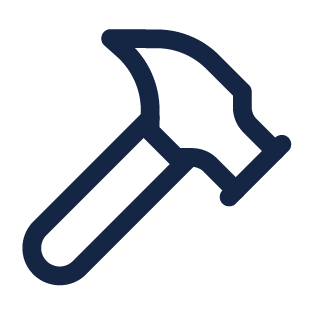
Trailer Brake Performance Monitoring (TBPM) – save time with in-motion with smart management of your brakes
Fitted to vehicles, TBPM continuously monitors trailer brake performance. Not only removing the need for quarterly rolling road brake tests but also keeping trailers compliant, in use and on the road.
Drops in performance are also flagged which allows fleet operators to manage trailer brake maintenance by exception, saving time and expense by addressing actions on a need-only basis.

Multi-Camera Systems – eyes where you need them
Load, side and rear facing cameras can be a real deterrent for thieves. Should a theft occur, load-facing cameras can capture exactly what happened and help with insurance and police enquiries.
Camera footage can also give you eyes on the road in the event of an accident. Working in sync with your in-vehicle telematics, post-incident analysis can be very powerful in understanding the root causes of an incident and identifying future safety improvements.
Let’s take your fleet from strength and strength
Where do the opportunities lie? What could offer you the most value? Where to start?
It’s a journey – and we’re only too happy to help you take that next step, so why not:
- Give us a call – we can help go through your options
- Request a demo – see some of our tech in action
Keep on learning – read on for further advice on how you can take your fleet from operational, to world class!

